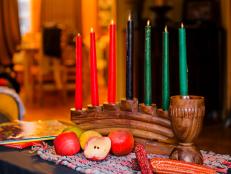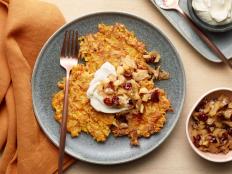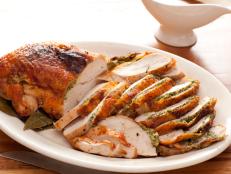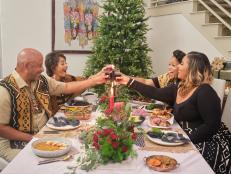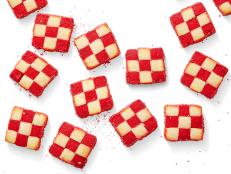How to Celebrate Thanksgiving and the Holidays During the Pandemic
Choosing virtual gatherings, social distancing and mask-wearing are key to a safer celebration this year.
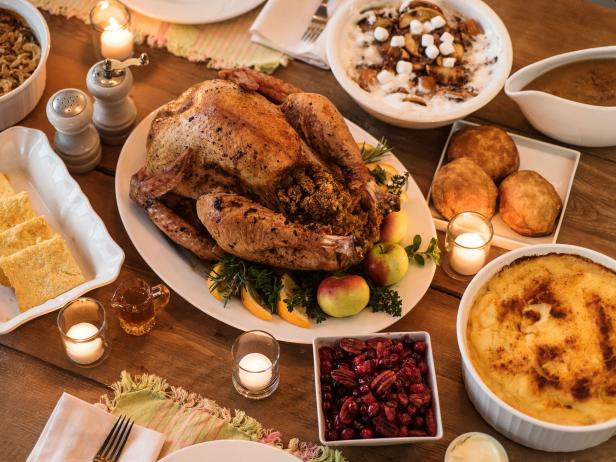
Tetra Images/Getty Images
Just as the coronavirus has upended every aspect of our lives, it’s promising to make the 2020 holiday season look like none other in our lifetimes. Usually we take gathering around the holiday table for granted. We travel to see loved ones, or host them in our homes. We hug.
This year is going to look quite different. We won’t have the freedom to safely mingle as we normally do. All get-togethers will require careful forethought, strategic planning, creativity and flexibility depending on our families' risk factors and where we are in the country. The CDC has released COVID-19 safety guidelines specific to the holidays this year, and director Robert Redfield recently warned governors that small household gatherings are "an increasing threat."
"There’s no easy answer," says Dr. Greg Poland, MD, director of the Mayo Clinic Vaccine Research Group. "Every time you get together in a group or you’re in close contact with somebody outside of your immediate family [whom you live with], you have increased your risk. There just is not any 'safe' when you’re talking about getting together with people. There’s safer, and unsafe, but there is no guarantee of safety."
And although we've all been living with the risks for months, the holidays are not the time to ease up on our regular safety protocols.
"Over the holidays we tend to let our guards down, because we’re on vacation or you're home and you want to be able to just chill," says Dr. Michelle Barron, MD, medical director of infection prevention and control at UCHealth University of Colorado Hospital. "I just don’t think this is the year that we want to do that."
Here's how to still make the holidays feel special this year — even socially distanced.
Consider Who Will Be There
The first thing to think about is who will be at the gathering, experts say. Make sure you know how careful others are being before you agree to attend or host. Large indoor gatherings with people outside your household and gatherings involving alcohol are considered high risk activities by the CDC.
"Where alcohol is involved, that represents even more of a risk, because people’s inhibitions get let down, and when people are drinking, they get louder, so they’re expelling more viral particles," Dr. Poland says. "Combine that with indoor low humidity, cooler weather, and the singing and frivolity of a holiday party, and you’re asking for trouble."
Open communication about rules for before and during the holidays can help make everyone safer and more comfortable. Quarantining for two weeks before the holiday, getting tested, and wearing masks in the house are all things to discuss. Keep in mind that a negative test only means that you didn’t have the virus when you were tested — it is possible to have a negative test, then contract COVID-19 while flying, for example. A test alone doesn’t mean you don’t need other precautions.
An added wrinkle: College students returning home. Numerous campuses around the country have been linked with outbreaks in various cities. Most colleges are ending the fall semester before Thanksgiving, and students will be leaving close-quarter living in dormitories to go home to see their families. "It’s a risk," Dr. Poland says. "No one wants it to be this way, but it is a risk."
Ultimately, there are some people for whom gathering is problematic no matter what, says James D. Cherry, MD, MSc, pediatric infectious diseases attending physician at Mattel Children’s Hospital UCLA. People 65 and older, pregnant women, anyone with a preexisting lung condition or compromised immunity, and people with type 2 diabetes and other chronic illnesses are especially vulnerable.

Sasha_Suzi/Getty Images
Virtual Gatherings Are the Safest Option
According to the CDC, virtual gatherings are a low risk activity, and for many people, gathering in the same house or outdoor space will just not be possible this year. If you live in the same city or town as family and friends, consider a potluck, where each family makes a dish, divides it up and delivers a portion to the other families. Then you can gather over Zoom to share the same meal.
Both Dr. Barron and Dr. Poland emphasize that with normal proper food handling techniques, cooking for others is relatively low risk.
"Your risk is from the person who brings the food to the table or who sits next to you,” Dr. Poland says. So dropping off a dish with minimal or no contact is fine.
Another possibility: Turn your friend-pod into family for the holidays. If you have relatives you normally see but can’t this year, share family traditions with your pod instead. Invite your relatives and theirs for Zoom or FaceTime calls during the meal.

Kosamtu/Getty Images
Eat Outside and Socially Distance In-Person
One way to make gatherings safer: "Eat outdoors," Dr. Poland says. The CDC considers a small outdoor dinner with people local to your community a moderate risk activity. Backyards with some room are ideal, but a screened-in porch or other open-air space, even if you don’t typically eat there, can offer a way to minimize risk.
Setting up the tables creatively is another solution that can be employed at any type of gathering, Dr. Barron says. Instead of having a kids table and one big table for adults, set up smaller tables all over where people sit with their immediate family. "If you don’t live with them, you still want to have physical separation," she notes.
If you live in a part of the country where it’s too cold to eat outside, you’ll need to take additional precautions to reduce risk at an indoor gathering, which the CDC considers a high risk activity.
"If people wear masks in the home, and you have adequate air purifying, and the house is big enough where you can socially distance while you’re eating," all those steps can help, Dr. Poland says. But remember, the risk will never be zero in this situation. Not many homes or families will be able to accomodate all of these parameters — and once you're in the same house celebrating, temptations to mingle will be hard to ignore.
Avoid Extensive Travel, If Possible
Gatherings with friends and family from various areas of the country pose a greater risk than gatherings with only those in your local area, according to the CDC. If you plan to travel or host guests from out of town, you need to assess the rate of infection of both locations.
"The first thing that you want to think about is where are you going, and how much COVID-19 is there, and are there any state, local or regulatory things that you need to know about ahead of time," such as the need to quarantine or limits on the number of people who can gather in one place, Dr. Barron says.
Flying is another high-risk activity because of the potential for holiday crowds. Even if the plane turns over air every few minutes, crowded airports and full flights still pose a risk. "You’ll pass through a minimum of two airports [departure city and arrival city], and you’ll be stuck in a metal tube for hours on end with 300 to 500 other people," Dr. Poland says. Dr. Poland notes that there may be increased demand for flights at the holidays, and financially struggling airlines may book more seats, decreasing distance between passengers. "Flying is risky business right now."
If you are going to fly, take extra precautions, experts say. Dr. Barron recommends using hand wipes and sanitizer frequently, and keeping sanitizer someplace handy so you don’t have to rummage through your bags to find it. She also notes that our regular immunity-boosting habits are just as important, such as staying hydrated and packing healthy snacks.
"We have to be more thoughtful than we normally would have in terms of just jumping on a plane or in the car," Dr. Barron says. The CDC offers a list of considerations for various kinds of travel on their website.
Get the Flu Shot
One thing all the experts recommended: Getting a flu shot. "We’re so focused on COVID, but it’s flu season," Dr. Barron says. "Right after Thanksgiving is when we see cases start to elevate. That’s when we’re most vulnerable."
And remember, whatever you decide to do, be ready for some added stress as we keep ourselves apart. "There’s a tension [between safety and] the emotional and mental health needs that we have as humans," Dr. Poland says. "We were created for community, not for isolation. This is very hard on people."
Related Links:
























